A couple neat things to keep around the shop
Homasote and leather are great ways to make work surfaces grippy and more forgiving.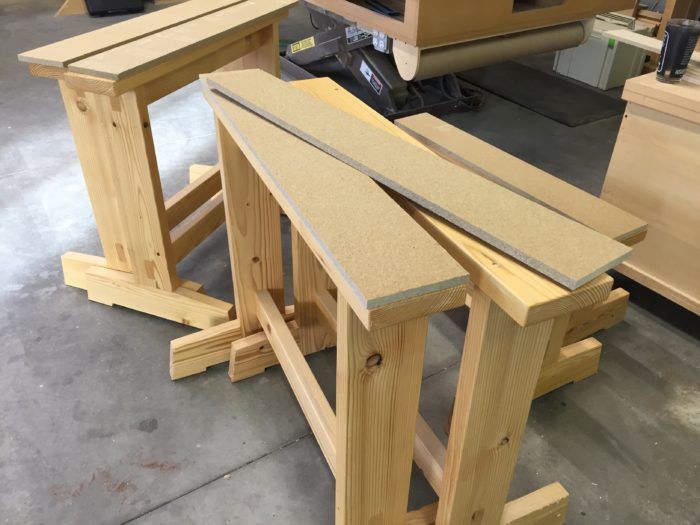
I’d like to share with you two inexpensive but useful items I like to keep around the shop. They are similar in how I use them, but I think it’s a good idea to have both. The first is a called Homasote; the second is leather.
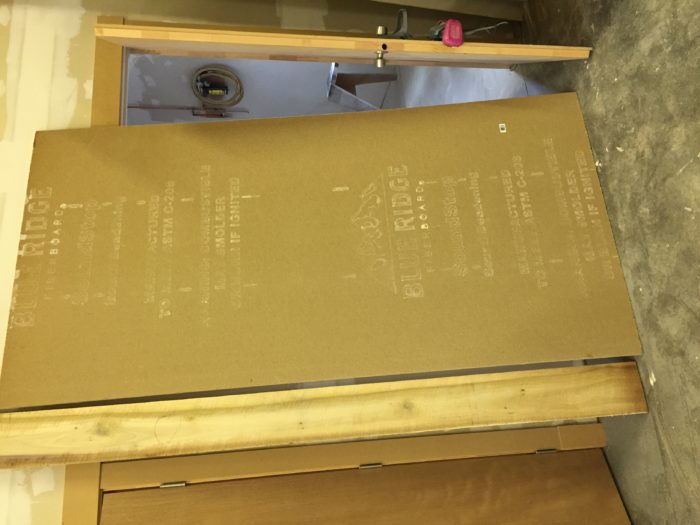
Homasote is sound barrier board constructed from compressed cellulose. Picture MDF, but loosely packed and stringy by comparison. It’s sold under a few different names depending on the source, but a quick search online will bring up plenty of results. Hint: search for sound barrier board, or fiberboard. Its sold in 4×8 sheets that are about 1/2 in. thick for under $20 in my location.
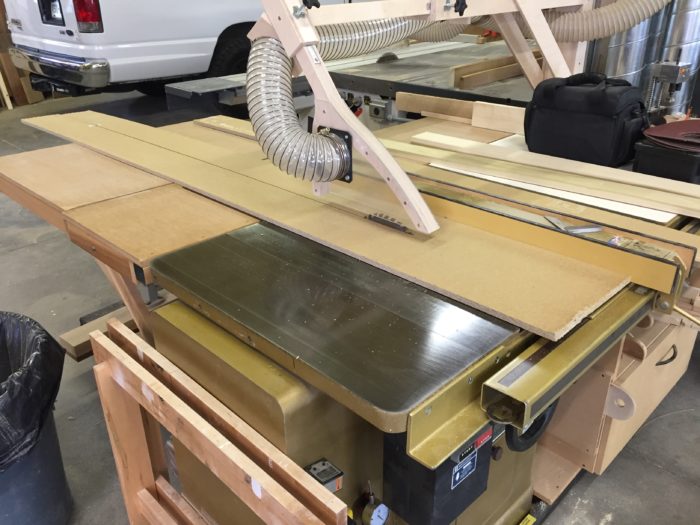
So what would a woodworker do with a building product? Several things. First, it makes a great replaceable, sacrificial surface. Here, I am applying it to the tops of my sawhorses. I hold it in place with a few brass screws and some silicone. Now I can cut up the tops of my sawhorses and it takes just a few minutes to replace them. It also has a nice texture with a little grip, which works well in this application.

Sound barrier board is also a great clamping pad. It’s soft enough to prevent denting from clamping pressure, but it’s strong enough to work like any other sheet good, so it can be cut and drilled to fit most types of clamps.

Homasote makes great clamping pads for pipe and bar clamps alike.
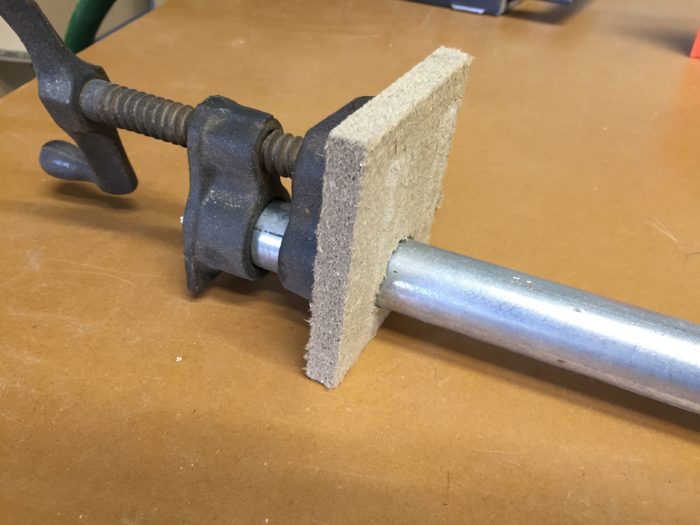
Leather is another neat item to keep around the shop. Leather comes in all shapes, sizes, and colors. Furniture grade leather is expensive. For kicking around the shop, tool-grade leather is a better way to go. It’s cheaper and saves the nice stuff for the Morris chair you’ll build one of these days. Leather is sold not by thickness but by ounce from 1 oz. to 16 oz. 1 oz is close to 1/64 in. and 16 oz. is about 1/4 in. thick. This is a very general rule and different sources will stock and sell different thicknesses and grades. For most stuff around the shop look for leather that is 1/16 in. to 1/8 in. thick (4 oz. to 9 oz.). Small amounts can be bought online for just a few bucks.
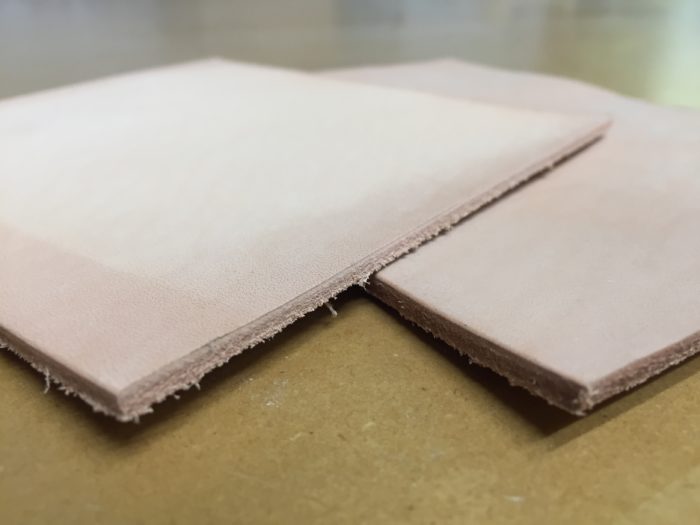
This is 8-9 oz. tool leather, a good thickness for general purpose shop stuff.
Leather can be added to the face of a vise. This will help your vise hold a workpiece steady with much less clamping pressure. Put some leather on the face of a mallet to help reduce denting or marring. I also like to make cable holders. Simply cut to width and length, and install a button. I also keep a few scrap pieces around to fold over or lay on something I need to grip tightly with pliers, or hit with a hammer.

Some scrap leather and a button make for a great tool wrap.
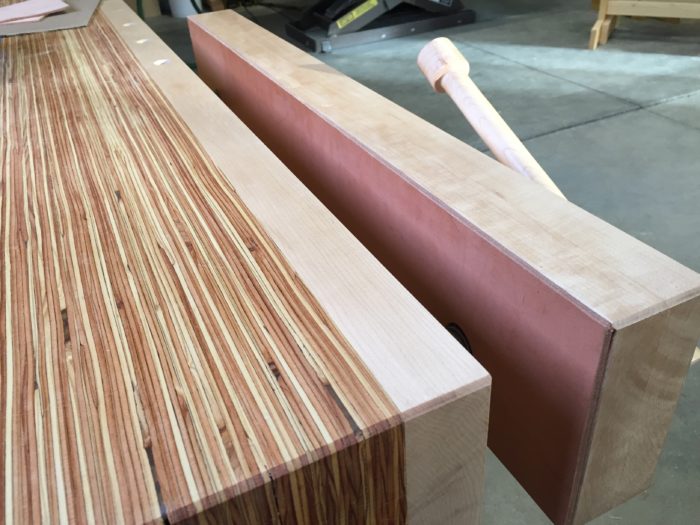
If you don’t have leather on your vise, give it a try. You’ll love it.
I consider both Homasote and leather to be shop essentials. Try them out. I think you’ll find many uses for both in your shop.
Also, just as a side note, in a recent blog post I talked about how I bid a small project. It was an Arts and Crafts fireplace mantel. Well, I finished that project and what do you know, I also made a video. I thought it would be neat to follow up on a previous blog post. Have a look if you dare.
Fine Woodworking Recommended Products

Double Sided Tape

Stanley Powerlock 16-ft. tape measure

Tite-Mark Marking Gauge























Comments
Actually, furniture grade leather is not expensive, it can be free. Leather furniture is often sent to the dump for recycling. I had a very fine leather recliner with a broken mechanism that was difficult to replace and was falling apart. I stripped off the leather (1/8"-3/16" thick) and, having read Mike Farrington's article, now have several uses for it. Thanks!
Like both sawhorse types in the photos. Just 3/4" stock?
They look like standard KD construction lumber to me. Started out at 1-1/2 in. thick. Looks like the wood has been planed to clean and true it up.
He made a video on them check it out, here is the link.
https://youtu.be/VWgGZ4Osg1U
He makes great videos should check out his whole channel.
Totally agree about leather.
Didnt know about the homasote, I'll have to give it a shot.
I've been using the old pink ridgid foam trick for something to cut on.
Log in or create an account to post a comment.
Sign up Log in